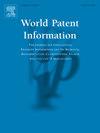纳米医学的专利前景:机遇与障碍
IF 1.9
Q2 INFORMATION SCIENCE & LIBRARY SCIENCE
引用次数: 0
摘要
本综述的目的是通过批判性地分析全球纳米医学专利,发现影响创新、商业化和监管一致性的系统性障碍和战略可能性。纳米医学的转化轨迹与知识产权(IP)框架、监管异质性和索赔复杂性有关。报告显示,专利市场拥挤且碎片化,材料和方法权利要求的重叠延迟了市场准入,并将许可成本推高了50%。专利权利要求的复杂性和不同的司法管辖区分类方案导致长期的审查积压,有时超过30个月。专利起草和批准的时间表因监管偏差而变得复杂,特别是在FDA, EMA和其他当局之间。早期自由操作分析、交叉许可和参与ISO/ASTM工作组都是战略干预的例子,这些干预可以减少50%的交易数量,并将上市时间缩短约20%。政策层面的改革,如共享知识产权激励、专家审查员跟踪和统一定义(例如,纳米颗粒尺寸为1-100纳米),可能会将许可成本降低约30%。医药和卫生保健领域的专利景观分析已经转变为一项多维的、人工智能驱动的工作,整合了语义提取、图论和经济建模,以揭示不同子领域的创新中心和战略机会。当伦理、法律和社会因素贯穿整个研发生命周期时,临床翻译就会得到促进,公众的信任也会增加。一个强大和有凝聚力的知识产权环境是实现纳米医学的全部潜力所必需的。这包括一个综合的监管专利战略,简化专利局的流程,提高审查员的知识,和统一的定义。除了提高专利的质量和执行力之外,这些改革还将增加竞争,吸引投资,并加速向患者介绍纳米医学的进展,这将最终降低医疗保健成本并改善患者的治疗效果。为了充分实现纳米医学的治疗和经济前景,本综述讨论了标准化专利定义、加快评估程序和纳入伦理框架的关键。创新将会加速,价格将会下降,强有力的、国际协调的知识产权制度将会加强患者获得尖端治疗的机会。本文章由计算机程序翻译,如有差异,请以英文原文为准。
The patent landscape of Nanomedicine: Opportunities and obstacles
Objective
The objective of this review is to discover systemic barriers and strategic possibilities that impact innovation, commercialization, and regulatory alignment by critically analyzing the patents of nanomedicine worldwide. The translational trajectory of nanomedicine is examined in relation to intellectual property (IP) frameworks, regulatory heterogeneity, and claim complexity.
Results
According to the report, the patent landscape is crowded and fragmented, with overlapping material and method claims delaying market entrance and driving up licensing costs by as much as 50 %. The intricacy of patent claims and disparate jurisdictional categorization schemes lead to protracted examination backlogs, which sometimes surpass 30 months. Timelines for patent drafting and clearance are complicated by regulatory misalignment, especially between the FDA, EMA, and other authorities. Early freedom-to-operate analyses, cross-licensing, and involvement in ISO/ASTM working groups are examples of strategic interventions that can reduce the number of transactions by 50 % and accelerate the time-to-market ratio by approximately 20 %. Reforms at the policy level, such as shared-IP incentives, specialist examiner tracks, and harmonized definitions (e.g., nanoparticle sizes of 1–100 nm), might reduce licensing costs by approximately 30 %. Patent landscape analysis in medicine and health care has transformed into a multidimensional, AI-powered endeavor integrating semantic extraction, graph theory, and economic modeling to reveal innovation hubs and strategic opportunities across diverse subfields. Clinical translation is facilitated, and public trust is increased when ethical, legal, and social factors are included throughout the R&D lifecycle. A robust and cohesive IP environment is necessary to realize the full potential of nanomedicine. This comprises an integrated regulatory-patent strategy, simplified patent office processes, enhanced examiner knowledge, and uniform definitions. In addition to increasing the quality and enforcement of patents, these reforms will increase competition, draw in investment, and hasten the introduction of nanomedicine advances to patients, which will ultimately lower healthcare costs and improve patient outcomes. To fully realize the therapeutic and financial promise of nanomedicine, this review discusses that standardizing patent definitions, expediting assessment procedures, and incorporating ethical frameworks are crucial. Innovation will be accelerated, prices will decrease, and patient access to cutting-edge treatments will be enhanced by a robust, internationally coordinated IP system.
求助全文
通过发布文献求助,成功后即可免费获取论文全文。
去求助
来源期刊

World Patent Information
INFORMATION SCIENCE & LIBRARY SCIENCE-
CiteScore
3.50
自引率
18.50%
发文量
40
期刊介绍:
The aim of World Patent Information is to provide a worldwide forum for the exchange of information between people working professionally in the field of Industrial Property information and documentation and to promote the widest possible use of the associated literature. Regular features include: papers concerned with all aspects of Industrial Property information and documentation; new regulations pertinent to Industrial Property information and documentation; short reports on relevant meetings and conferences; bibliographies, together with book and literature reviews.
 求助内容:
求助内容: 应助结果提醒方式:
应助结果提醒方式:


